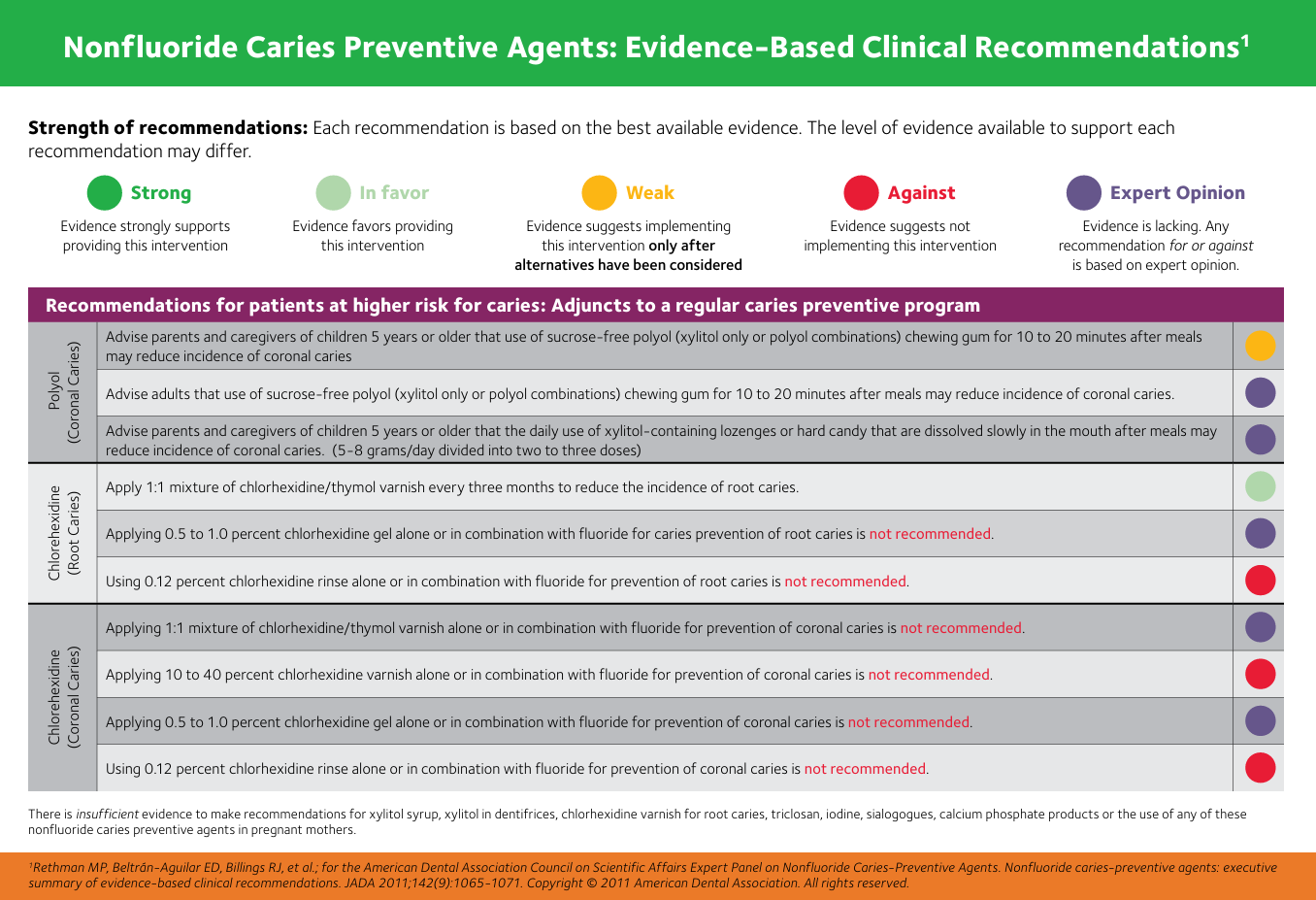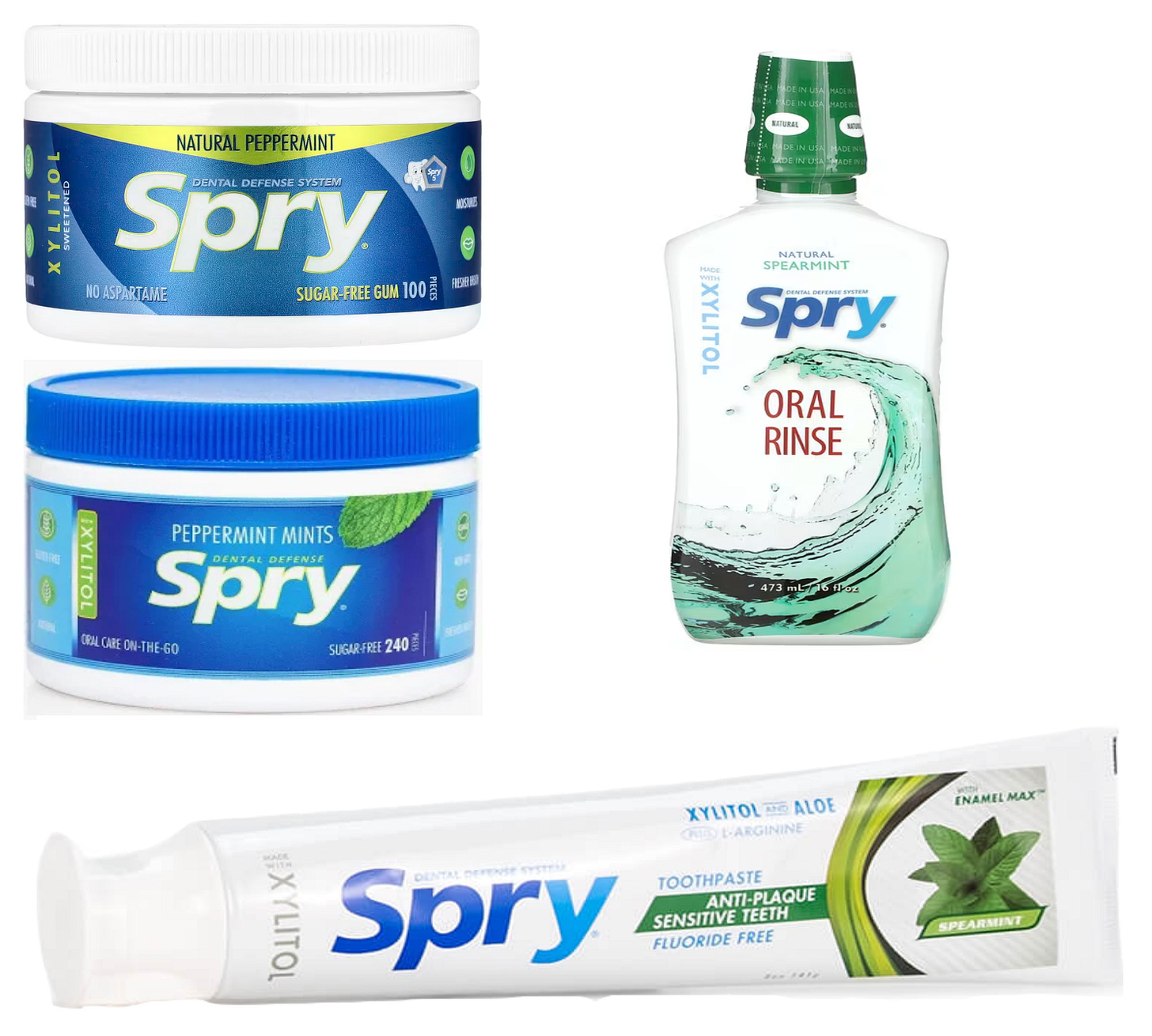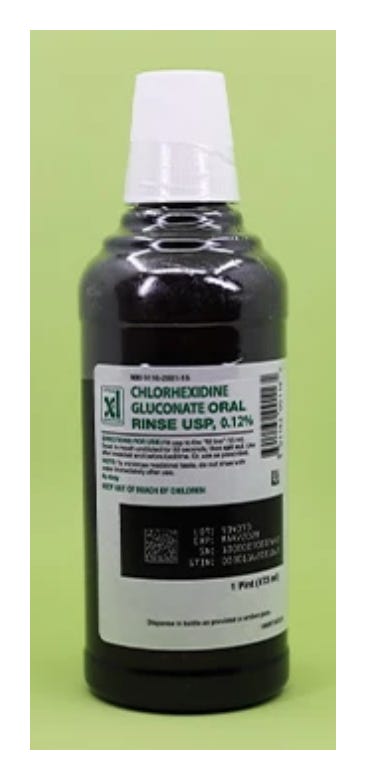Prevention of Dental Caries in Adults
Age old problem now has solutions beyond flossing, brushing, and fluoride.
By Peter A. McCullough, MD, MPH
A recent paper appeared in JAMA by Alpert et al from Harvard updating progress on prevention of tooth decay but was lacking innovative products I recommend in my medical practice every day. Here is a summary of the paper.
Prevalence and Risk Factors
Dental caries (tooth decay or cavities) is a highly prevalent condition among adults in the United States, affecting more than 90% of the population, with 26% having untreated caries. The disease results from demineralization of teeth due to acids produced by oral bacteria, primarily Streptococcus mutans and lactobacilli, which metabolize dietary carbohydrates. Key risk factors include frequent consumption of sucrose-containing foods and beverages, poor oral hygiene, dry mouth (xerostomia, often medication-induced), and substance use. Protective factors include fluoride exposure from community water fluoridation and toothpaste, which strengthens enamel and reduces caries risk.
Clinical Presentation and Complications
Approximately 40% of people with untreated caries experience pain, which typically arises when decay reaches the tooth pulp, causing infection and inflammation. Advanced caries may present as visible cavities, changes in tooth color, and swelling or sinus tract formation. If left untreated, caries can lead to serious complications such as abscesses, cellulitis, and, rarely, life-threatening conditions like Ludwig’s angina, which can compromise the airway. Caries is also associated with oral pain, tooth loss, and exacerbation of systemic conditions including diabetes, obesity, iron deficiency anemia, and depression. There is evidence of increased all-cause mortality among individuals with caries, though causality is unclear.
Management in Medical and Dental Settings
The American Dental Association (ADA) recommends that moderate and advanced caries be treated by dental professionals. Treatment options include root canal therapy or extraction for teeth causing spontaneous pain. Medical clinicians can provide interim care, such as pain management with nonsteroidal anti-inflammatory drugs (NSAIDs) and acetaminophen, reserving opioids for cases where these are contraindicated or ineffective. Antibiotics are indicated for patients with localized abscesses, swelling, or systemic spread who cannot see a dentist promptly. First-line antibiotics include oral amoxicillin, azithromycin, clindamycin, or cephalexin. Emergency transfer is necessary for patients with airway or optic tract compromise. For incidentally identified caries, clinicians can apply 38% silver diamine fluoride or fluoride varnish to arrest or slow disease progression while awaiting dental care. These minimally invasive treatments may be reimbursed by insurance and online training is available.
Dentists diagnose caries using clinical and radiographic examination, categorizing lesions as initial, moderate, or advanced. Treatment for non-pulpal caries involves restoration (filling) or crowns, while pulpal involvement requires root canal or extraction. Dental coverage for adults varies by state Medicaid programs, and access is limited by the low proportion of dentists accepting Medicaid. Medicare generally does not cover dental care, though dental schools and federally qualified health centers offer lower-cost options.
Prevention
The US Preventive Services Task Force found insufficient evidence to recommend routine screening for dental caries in adults by primary care clinicians. Preventive strategies include regular brushing and flossing, dietary counseling to reduce sugar intake, and prescription of high-fluoride toothpaste (5000 ppm) for high-risk individuals. Community-level interventions, such as water fluoridation, are also recommended despite the current trend to remove additional fluoride from the water supply. The interval between dental checkups can be extended for low-risk patients without detriment to oral health.
Critique
Prevention was the shortest paragraph. Fluoride and routine dental care were the only interventions mentioned. The paper did not suggest Xylitol products or chlorhexidine which are in standard American Dental Association tables.
Xylitol Products
Xylitol is a natural short-chain sugar that attenuates growth of streptococcus mutans and works to favor a healthy dental microbiome. The ADA states that using sucrose-free polyol (xylitol-only or polyol combinations) chewing gum for 10–20 minutes after meals may reduce the incidence of coronal caries in adults. Similarly, xylitol-containing lozenges or hard candies dissolved slowly after meals (5–8 grams per day, divided into 2–3 doses) may also help. However, the ADA notes that evidence is insufficient for xylitol in toothpaste or dental rinses, however Xylitol is best used as an adjunct to regular oral hygiene practices precisely as a toothpaste and dental rinse used twice daily.
Chlorhexidine
The ADA has evaluated chlorhexidine as a non-fluoride caries preventive agent. While chlorhexidine mouth rinses are effective in reducing plaque and gingivitis, the ADA finds insufficient evidence to recommend chlorhexidine for the prevention or management of dental caries in most patients. Chlorhexidine may be considered in specific cases with concurrent gum disease, but it is not a primary recommendation for caries control.
Summary
While Harvard is stuck on fluoride and routine dental hygiene, the ADA suggests you consider Xylitol gum, mints, toothpaste, and dental rinses. If there is some gingival disease, additionally chlorhexidine rinses can be considered. Don’t rely on flossing and standard toothpaste alone. I will address periodontal or gum disease in a later issue of FOCAL POINTS.
Please subscribe to FOCAL POINTS as a paying ($5 monthly) or founder member so we can continue to bring you the truth.
Peter A. McCullough, MD, MPH
FOCAL POINTS has partnered with Patriot Mobile to defend your medical freedom. Join Patriot Mobile today!







Fluoride is a deadly poison. After struggling with dental problems for some years --I have had no dental issues (i.e. CAVITIES} for years. Some essential oils from plants--specifically helichrysum and sage are anti-microbial agents.
Here is something that worked. Apply a few drops of helichrysum or sage to teeth by spreading it with a sterile cloth or fingers. Then apply DMSO the same area. Helichrysum and sage kill and/or discourage the growth of bacterial organisms that cause decay while the DMSO drives it in. Does not taste bad and is nontoxic.
Please see article by MIDWESTERN DOCTOR on the benefits of DMSO.
I may try the nose spray as well.
Caries?